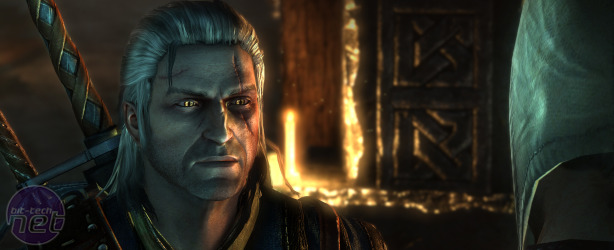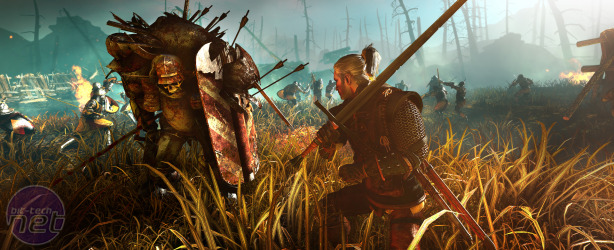The Witcher 2: Assassin of Kings Preview
March 4, 2011 | 07:40
Companies: #cd-projekt #namco #namco-bandai

The Witcher 2 PC Preview
What makes The Witcher 2 such a dramatic improvement over the first game, however, isn’t just the structure of the quests. Instead, it’s the changes that have been wrought on the interface that have the most appreciable effect – everything from the combat to the skill trees have been overhauled, making them prettier, more intuitive and less of a pain to get your head around.For example, CD Projekt has eschewed the multi-click and time-based combos of the first game's combat system, replacing them with a more conventional third person melee system that fits The Witcher 2’s viewpoint and style a lot more closely. You’ll still have to plan some aspects of the fight carefully, lacing your weapons with poisons, preparing spells with your quick-keys and making crafty use of bombs, but it’s no longer a matter of clicking in a particular rhythm to win.
The various menus through which you’ll have to sift have undergone a facelift too, swapping the cumbersome and clunky design of the originals in favour of a shinier and more stylish aesthetic. The skill tree, for example, now looks like a spider's web, complete with threads that wobble slightly when you click on them. Sure, it’s shallow to laud so much attention on something so small and meaningless, but so what? It looks nice.
In fact, the whole game looks great. CD Projekt has swapped out Dragon Age’s old Aurora Engine in favour of a new engine of its own. It looks fantastic, with huge areas flush with detail backed up by superb character models. Combat animations benefit from this too, if only because you’re not watching the same attacks loop over and over again.
Not everything in The Witcher 2 is perfectly implemented, however, and there are occasional hints that CD Projekt has put the form of its world ahead of the function. Every journalist in the room with us needed help finding their way out of the city and down the right path, for example, despite having the mini-map. On two occasions, we ended up rambling down the wrong path or barrelling forwards with no clear idea of where we were supposed to be going.
Similar results showed up within the quest itself too. When Dandelion tries to use his charms and poetic abilities to lure the succubus out of hiding, for example, he has to recite a love ballad composed of three verses. The player guides him through this process by choosing the correct starting lines for each verse. Get it right and the succubus will open her den for you. Get it wrong and, well, you’ll just have to keep going until you get it right. At no point is it clear that you’re supposed to know the order of the lines based on a performance you saw earlier, nor was it clear that you were supposed to take notes at the time.
Mercifully, CD Projekt is aware of these problems and producer Tomasz Gop claimed that many of these issues had already been fixed in the latest builds of the game and were merely hang-ups left over in the pre-beta version that we were playing. Gop promised that the full game would flag hidden paths and important information a lot more clearly, meaning that you’d hopefully never be left stumbling around confusedly.
If true, it’s a great sign for The Witcher 2, as these were the only real flaws we could see with the game. The combat, the graphics and the tone were all exemplary otherwise, painting a picture of an RPG that should offer a much more polished and high-budget feel than the original, while still retaining all the grim neutrality and complexity that we admired so much.
The Witcher 2: Assassin of Kings is being developed by CD Projekt for PC and will be published by Namco Bandai on 17 May 2011.

MSI MPG Velox 100R Chassis Review
October 14 2021 | 15:04











Want to comment? Please log in.